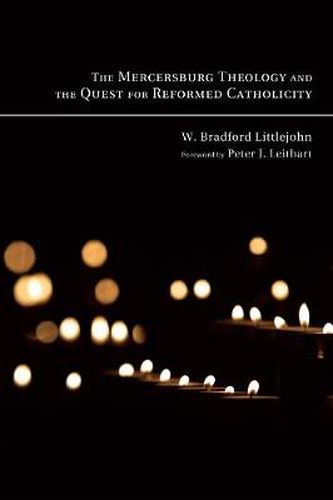Readings Newsletter
Become a Readings Member to make your shopping experience even easier.
Sign in or sign up for free!
You’re not far away from qualifying for FREE standard shipping within Australia
You’ve qualified for FREE standard shipping within Australia
The cart is loading…






This title is printed to order. This book may have been self-published. If so, we cannot guarantee the quality of the content. In the main most books will have gone through the editing process however some may not. We therefore suggest that you be aware of this before ordering this book. If in doubt check either the author or publisher’s details as we are unable to accept any returns unless they are faulty. Please contact us if you have any questions.
In the mid nineteenth century, Reformed churchmen John Nevin and Philip Schaff launched a fierce attack on the reigning subjectivist and rationalist Protestantism of their day, giving birth to what is known as the Mercersburg Theology. Their attempt to recover a high doctrine of the sacraments and the visible Church, among other things, led them into bitter controversy with Charles Hodge of Princeton Seminary, as well as several other prominent contemporaries. This book examines the contours of the disagreement between Mercersburg and Hodge, focusing on four loci in particular-Christology, ecclesiology, sacramentology, and church history. W. Bradford Littlejohn argues that, despite certain weaknesses in their theological method, the Mercersburg men offered a more robust and historically grounded paradigm for the Reformed faith than did Hodge. In the second part of the book, Littlejohn explores the value of the Mercersburg Theology as a bridgehead for ecumenical dialogue, uncovering parallels between Nevin’s thought and prominent themes in Anglican, Catholic, and Orthodox theology, as well as recent debates within Reformed theology. This thorough study of one of the most creative movements in American theology offers an alluring vision of the quest for Reformed catholicity that is more relevant today than ever.
$9.00 standard shipping within Australia
FREE standard shipping within Australia for orders over $100.00
Express & International shipping calculated at checkout
This title is printed to order. This book may have been self-published. If so, we cannot guarantee the quality of the content. In the main most books will have gone through the editing process however some may not. We therefore suggest that you be aware of this before ordering this book. If in doubt check either the author or publisher’s details as we are unable to accept any returns unless they are faulty. Please contact us if you have any questions.
In the mid nineteenth century, Reformed churchmen John Nevin and Philip Schaff launched a fierce attack on the reigning subjectivist and rationalist Protestantism of their day, giving birth to what is known as the Mercersburg Theology. Their attempt to recover a high doctrine of the sacraments and the visible Church, among other things, led them into bitter controversy with Charles Hodge of Princeton Seminary, as well as several other prominent contemporaries. This book examines the contours of the disagreement between Mercersburg and Hodge, focusing on four loci in particular-Christology, ecclesiology, sacramentology, and church history. W. Bradford Littlejohn argues that, despite certain weaknesses in their theological method, the Mercersburg men offered a more robust and historically grounded paradigm for the Reformed faith than did Hodge. In the second part of the book, Littlejohn explores the value of the Mercersburg Theology as a bridgehead for ecumenical dialogue, uncovering parallels between Nevin’s thought and prominent themes in Anglican, Catholic, and Orthodox theology, as well as recent debates within Reformed theology. This thorough study of one of the most creative movements in American theology offers an alluring vision of the quest for Reformed catholicity that is more relevant today than ever.